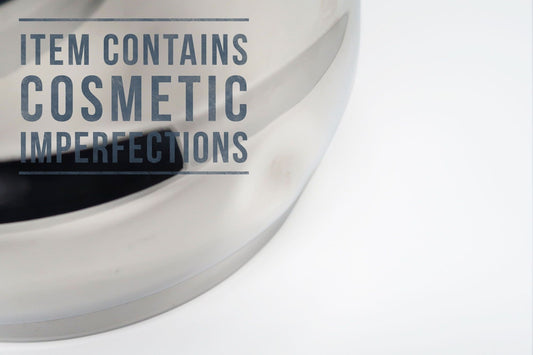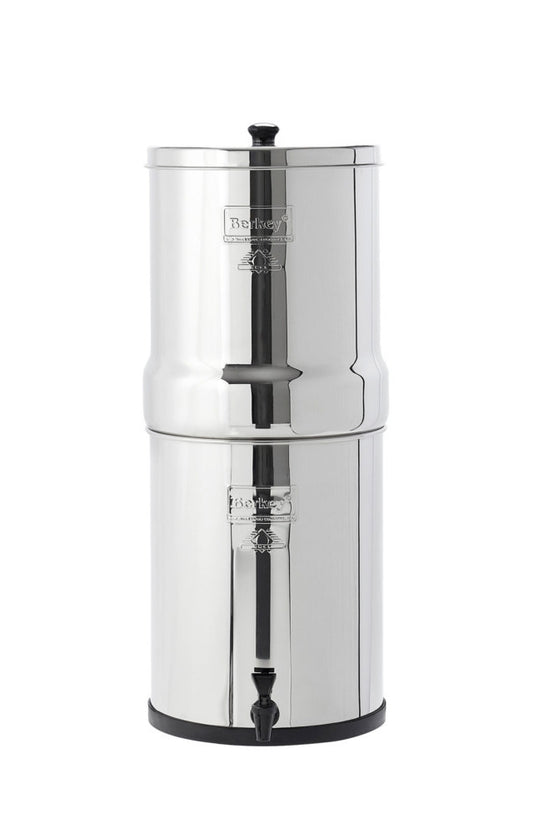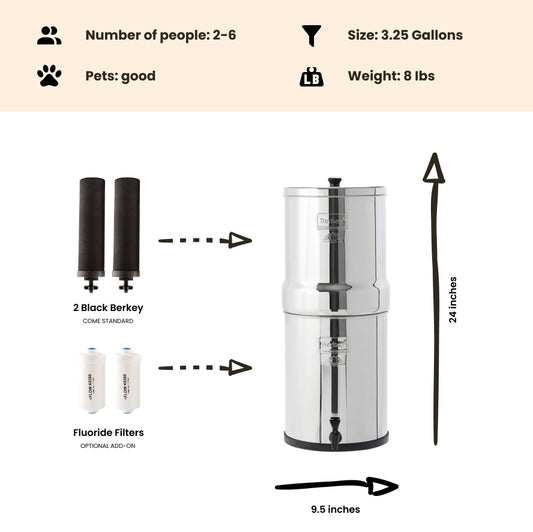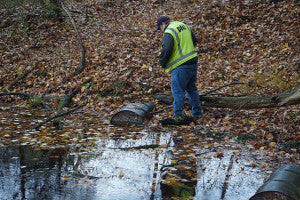
Water Safety Guidelines for PFAS Vary Depending on Where you Live
By Dan DeBaunShare
In an effort to address the widespread public health issue related to contamination of drinking water sources with per-fluoroalkyl and poly-fluoroalkyl chemicals, known as PFAS, a recent study has found that individual states are recommending their own guidelines for two of the key PFAS contaminants, perfluorooctanoic acid (PFOA) and perfluorooctane sulfonate (PFOS), and these differ from those proposed by the US Environmental Protection Agency (EPA) and are more likely to protect public health.
Side Note: The Black Berkey elements that come standard with our Berkey systems do reduce Perfluorinated Chemicals by over 99.9% (PFOA, PFOS, PFAA contaminants). Berkey water filter Perfluorinated Chemical test results can be found here.
The study's findings, which were recently published in the Journal of Exposure Science & Environmental Epidemiology, highlight the urgent need to more stringent limitations on these harmful chemicals in drinking water together with enforceable drinking water standards to safeguard public health of millions of consumers across the country whose drinking water supply has been contaminated with these pollutants.

Water Safety Guidelines for PFAS Vary Depending on Where you Live
PFAS chemicals used in firefighting foams, non-stick cookware, stain repellents, as well as other industrial applications since the mid 1900s can leach through soils into groundwater or through runoff into freshwater systems, ultimately making their way into- and contaminating drinking water supplies. The original source of the this contamination is often military/air-force fire-fighting training bases, airports and industrial sites. Although these chemicals have since been phased out in the US due to the associated health concerns, they are still used in products manufactured outside of the US, and they persist in the environment where they continue to pose a health risk.
More than twenty-five communities across the country have been exposed to these harmful industrial chemical contaminants via their drinking water. Furthermore, the US military has identified around 400 military sites that are contaminated with PFAS largely due to extensive use of firefighting foam at these locations.
PFAS chemicals have been associated with several health risks, including an increased risk of cancer, thyroid disease, as well as developmental problems. Yet, shockingly, there are still no federal drinking water standards for this harmful contaminant.
"In the absence of federal standards, states are developing their own guidelines, using different approaches to determine what a safe level in drinking water should be," explains Dr. Laurel Schaider, an environmental chemist at the Silent Spring Institute and co-author of the study.
In order to gain a clearer understanding of the differences in how federal and state regulators viewed the problem, the researchers identified states that have introduced guidelines pertaining to PFAS levels in drinking water, together with recommended remedial steps needed should these contaminants be present at unsafe levels. They then compared these state guidelines to health advisories issued by the EPA for the same contaminants.
The study reveals seven states that have introduced their own guidelines for PFOA and PFOS chemicals in drinking water, three of which (Minnesota, New Jersey and Vermont) have set the levels for these contaminants lower than those recommended by the EPA (a further three states — California, New Hampshire and New York — have proposed lower levels since this paper was published, bringing the total to six). The recommended guidelines for PFAS chemicals also vary greatly from state to state. While the EPA recommends that the maximum combined level of PFOA and PFOS should not be higher than 70 nanograms per liter, levels recommended by different states range from a slow as 13 nanograms per liter in New Jersey to 1,000 nanograms per liter in North Carolina.
States that recommend more prudent levels of PFAS in drinking water typically took additional health risks, which were not considered by the EPA, into account.
Journal Reference Cordner, A., V.Y. De La Rosa, L.A Schaider, R.A. Rudel, L. Richter, P. Brown. 2019. Guideline Levels for PFOA and PFOS in Drinking Water: The Role of Scientific Uncertainty, Risk Assessment Decisions, and Social Factors. Journal of Exposure Science & Environmental Epidemiology. DOI: 10.1038/s41370-018-0099-9"Assessments by multiple states and academic scientists suggest that EPA's health advisory for drinking water is not sufficiently protective," explains lead author, Alissa Cordner. "Previous studies in children exposed to PFOS have shown effects on immune function at lower exposures than EPA's drinking water advisory levels. The most sensitive toxicological endpoints--altered mammary gland development and suppressed immune function--were not the basis for EPA's health advisories but were used by a small number of states."
"There are currently no federal drinking-water standards for PFOA and PFOS, despite widespread drinking water contamination, ubiquitous population-level exposure, and toxicological and epidemiological evidence linking it to various diseases," says Cordner. "Because of this, public water entities are not required by law to routinely test whether contaminant levels in water exceed EPA's health advisory and state agencies are not empowered to enforce cleanup."
-
Regular price From $302.00 USDRegular priceUnit price / per
-
Regular price $234.00 USDRegular priceUnit price / per
-
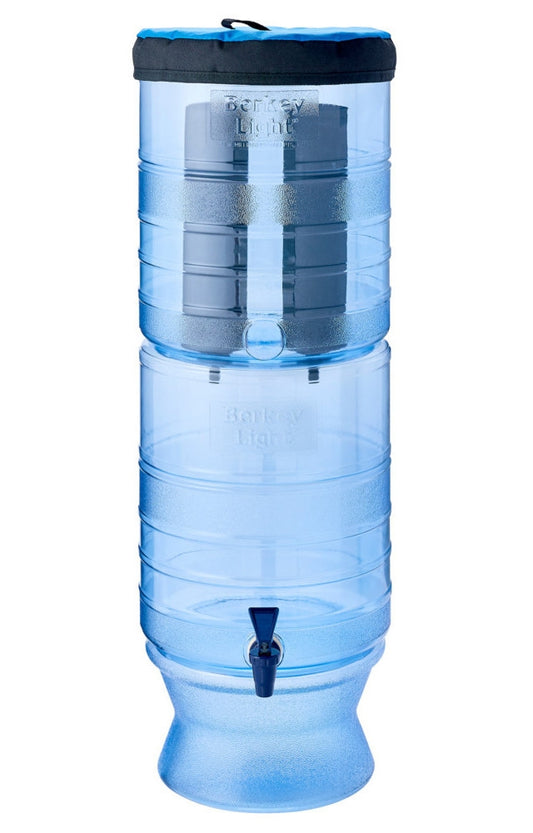
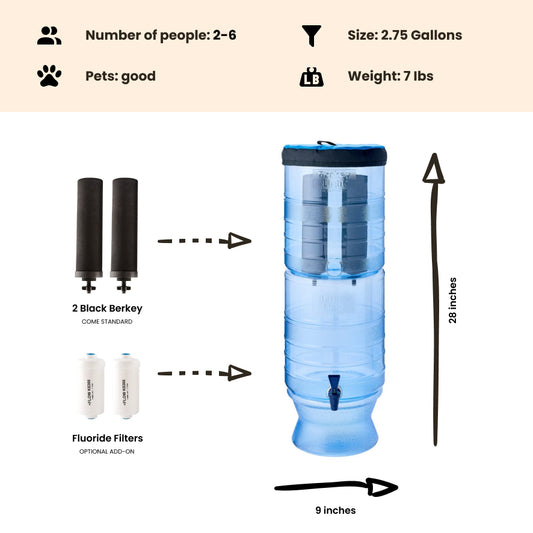 Sold outRegular price From $305.00 USDRegular priceUnit price / per
Sold outRegular price From $305.00 USDRegular priceUnit price / per -
Regular price $327.00 USDRegular priceUnit price / per
-
Regular price From $367.00 USDRegular priceUnit price / per
-
Regular price From $408.00 USDRegular priceUnit price / per
-
Regular price From $451.00 USDRegular priceUnit price / per

Dan DeBaun
Dan DeBaun is the owner and operator of Big Berkey Water Filters. Prior to Berkey, Dan was an asset manager for a major telecommunications company. He graduated from Rutgers with an undergraduate degree in industrial engineering, followed by an MBA in finance from Rutgers as well. Dan enjoys biohacking, exercising, meditation, beach life, and spending time with family and friends.
~ The Owner of Big Berkey Water Filters


